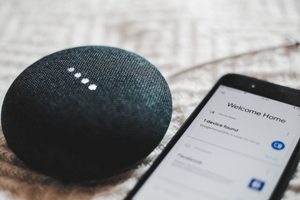A day in the life of the IoT home

By 2020 the Internet of Things is expected to have exceeded 50 billion devices but based upon previous predictions it is likely that this will be smashed by some margin.
For those who are tech-savvy, the idea behind an IoT world is both exciting and logical but for many, the concept simply does not compute. Can current technology produce a world only previously seen in shows such as Star Trek?
A day in the life of a connected home
It is 5.00am and your smart thermostat knows that you will be waking up in an hour’s time. The thermostat has detected that it is cold outside and it knows the temperature you like the house to be when you awaken. It sends a signal through your smart hub to the Raspberry Pi control device attached to your gorgeous wall mounted fireplace and gets the room ready for you.
At 5.58am your U by Moen shower gets the water to the right temperature for you and shuts off ready for your voice command. At 5.59am Alexa gradually increases the light level of your Philips’ Hue lighting helping ease you into the day before turning on the radio to the business news.
As you get out of bed, sensors connected to your hub communicate with your shower and turn it on for you. As you leave the room, the lights and radio turn off but simultaneously turn the bathroom ones on so that you can seamlessly continue to listen to the news.
As you shower, your Amazon Echo informs your coffeemaker to start. Alexa has learned that you feel awake enough to start your day as you are drying off so she runs through your appointments for the day with you. As you dress, you are reminded again that you forgot to buy a present for your mother’s birthday tomorrow.
It isn’t Alexa’s fault, you’ve been putting it off, but fortunately, she has some suggestions based upon your purchases for her in the past. You agree with the picks and the order is placed without you having to touch a keyboard.
As you make breakfast, your Amazon DRS weight sensor notices that you are running low on cereal. You’ve not changed your brand since connecting your home so it automatically orders a replacement for you. You spill some cereal as you walk across the kitchen but you ignore it, not out of laziness, but because your Robovac 11 will clean it up after you’ve left for work.
You put on your Digitsole footwear and head out of the house to work. You don’t bother to lock up as your Smart Lock will take care of that for you. Behind you, Alexa switches off all the lights and communicates to the thermostat that you have gone.
On the way to work, your smart doorbell rings and your phone shows you an image of the man at the door. It is clear that he is not a delivery man or from any utility company; in fact, he seems to be nervous and “casing” your home. You apologise to him and say you are in the bathroom but you will be right down.
You send Alexa a message to turn lights on in the home in a pattern that makes it look like you are there. The man decides not to wait around. Later in the day, you get a message to say that your Amazon delivery person let themselves in using your fingerprint lock and that they have replenished your cereal and a few other staple items you were running low on.
Your watch informs you later in the day that your shoes feel you haven’t been active enough. You decide to have a swim on the way home to make up for this. Alexa is automatically informed of the change to your routine and the heating remains off but the lighting once again mimics your presence in the home.
Some of the systems in your house were not directly compatible with Alexa so you installed bespoke devices to them to allow greater control. Your external cameras detect the same man hanging around your home again so your curtains automatically close and the TV turns on to fully sell the idea that you are home.
Once home, your smart TV turns off and waits until you come into the lounge, it already knows what you want to watch. Whilst you are preparing dinner (and Amazon is noting what products you are running out of), your Echo plays the local news; you hear that a number of houses in the neighborhood have been broken into when their owners were at work.
Your NEST thermostat gets the living room ready for you and slowly starts to get your bedroom and the bathroom to a comfortable temperature. Alexa knows that you have a busy day tomorrow so as it gets late she slowly dims the lights and adjusts the brightness of the TV. When you do go to bed, you fall straight to sleep. You don’t need to set an alarm, your house already knows when you need to get up.
The author of this blog is freelance writer, Jocelyn Brown
Comment on this article below or via Twitter @IoTGN
